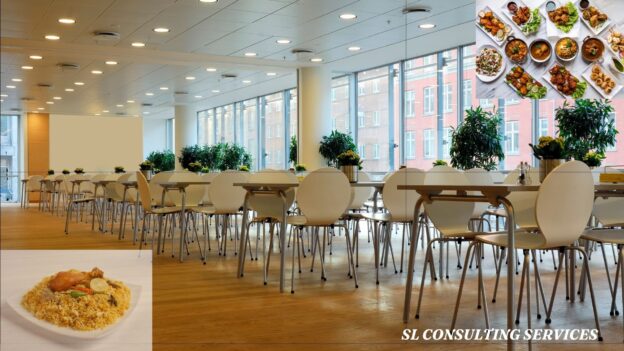The office cafeteria service is a must-have amenity for workplaces with over fifty full-time employees. The overall workplace experience is significantly influenced by cafeteria services, encompassing various elements such as food menus, preparation, delivery, logistical support, and many nuanced customer expectations. A cafeteria serves as a crucial employee-centric amenity that reflects an organisation’s management priorities, emphasising cultural inclusivity, health, and the promotion of diversity within the workplace. Incorporating sustainability throughout the process presents a challenge for the Cafeteria Facility Manager. The Manager’s responsibilities include ensuring acceptability, reasonable satisfaction, health, and hygiene for employees while maintaining cost efficiency in service delivery.
For a service model that includes hot-plating, delivery, and serving or delivery of bulk hot cook-serve of bulk food followed by plating and serving, the Cafeteria Manager must plan out minute detailing of logistics support.
Space
Food
Water
Energy
Waste
Cost

Space –
• Food storage
• Freezer areas for perishable items
• Parking and cleaning areas for food items and trolleys
• Food preparation (on-site or off-site cooking)
• Cooking or Reheating equipment
• Plating areas
• Dishwashing and potwashing
• Staff dining
• Adjoining amenities for staff
Food-
To ensure food safety, it is imperative to conduct inspections through authorised third-party entities and achieve full compliance with guidelines and standards set by food safety local governmental authorities. The selection of menu items should meticulously consider factors such as maximum patron capacity, health, safety, hygiene, seasonal availability, and the significance of sourcing ingredients locally. It is advisable to avoid stockpiling perishable goods and refrain from purchasing items with a high carbon footprint due to long-distance transport.
Water-
Water efficiency is essential for the sustainable practices implemented within cafeteria services. Establishing a baseline and comparing improvements against industry benchmarks are crucial for incremental enhancements.
Energy-
A commercial-grade kitchen can account for up to 40% of the total energy consumption in a typical commercial building. Cooking and hot-plating equipment necessitate high-energy devices. However, significant energy waste can be avoided by carefully selecting cooking equipment and optimising food preservation and serving processes.
Waste-
Efficient waste management in large food service operations relies on three primary strategies: waste reduction, repurposing, and recycling. To develop effective control measures, it is crucial to monitor and establish a baseline for the reduction of food and non-food item waste, as well as for items that are repurposed, recycled, or sent to landfills.
Cost-
Subsidising food services for employees is a widely adopted practice that emphasises employee-centric benefits. The subsidy percentage may range from 0% to 100%, depending on the organisation’s policies regarding employee benefits. Cost efficiency is crucial for creating a sustainable arrangement that benefits management and the employee community. It is vital to track and analyse costs throughout all stages, from procurement to delivery, to establish benchmarks and compare them with industry standards within the local region.

